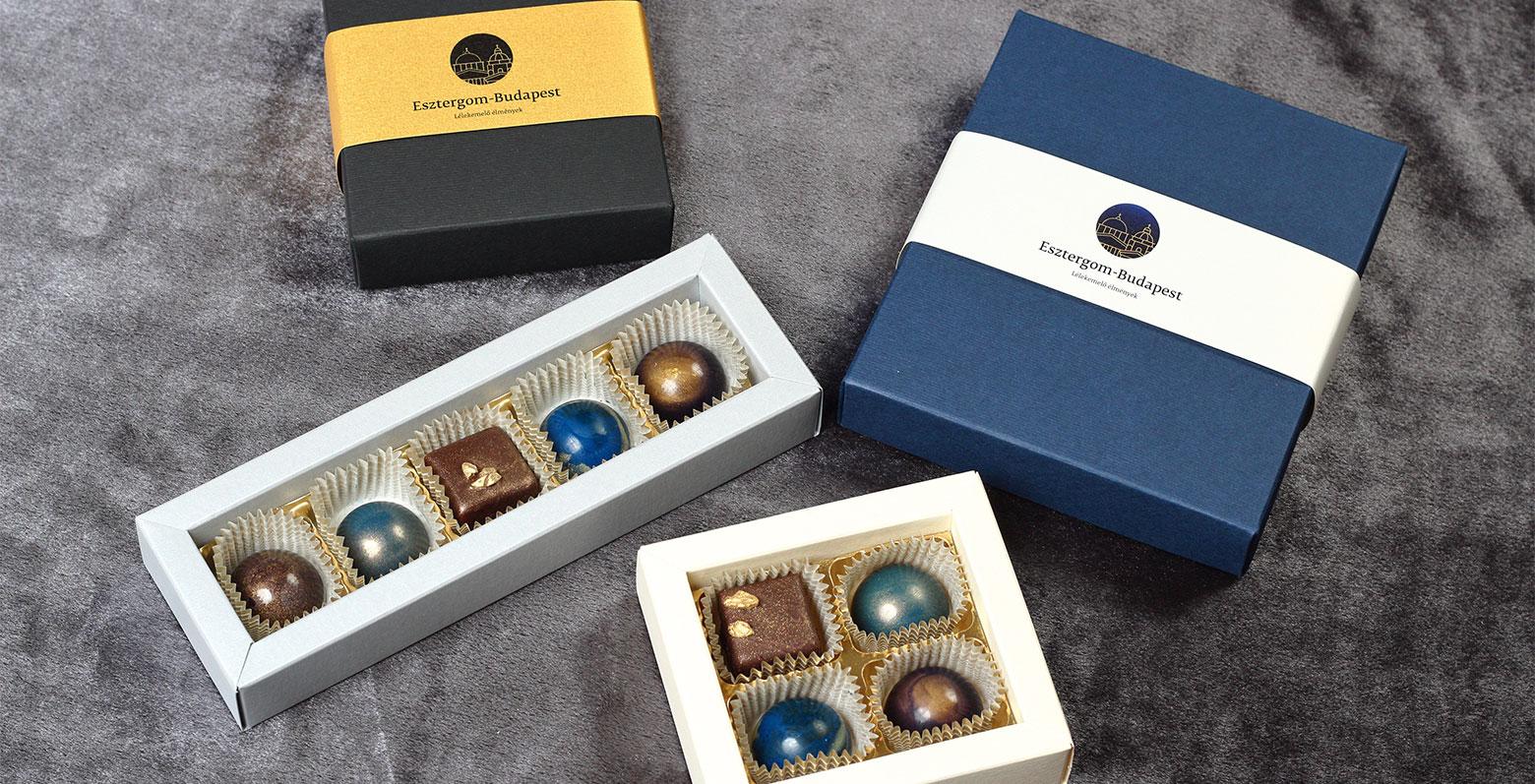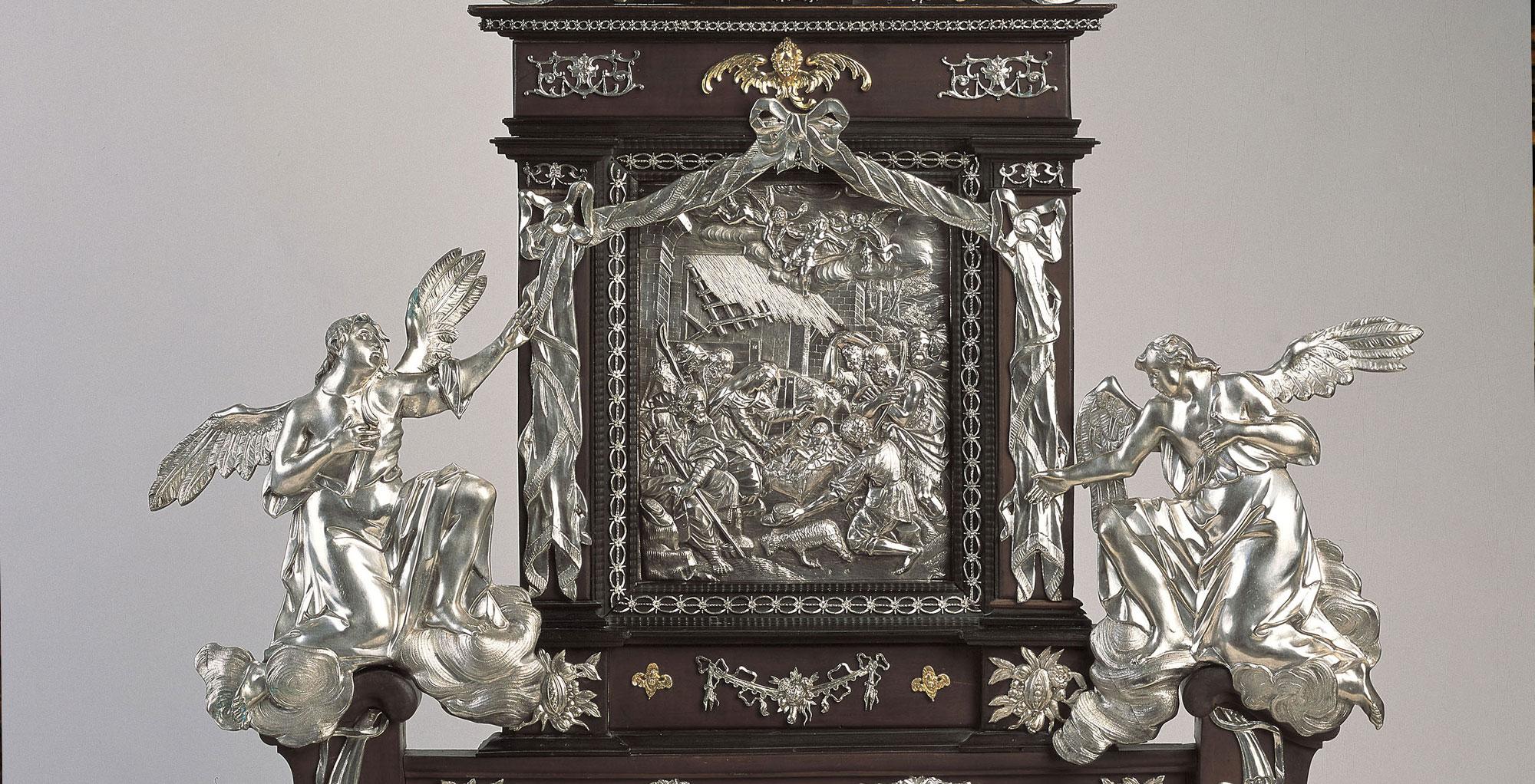Saffron eggnog, rosemary pecan and frankincense ganache cream bonbon – just a few of the flavours of our archdiocese’s own design bonbons, handcrafted with care, moulded into elegant hemispheres and packaged in a gift box. To flavour them, we used frankincense used in church ceremonies, saffron grown in the garden of our country’s primate, and rosemary, which symbolises eternal love.
According to a written record from the 17th century, rosemary and saffron were already popular in the archbishop’s kitchen at that time. It was 1664 to be exact, when the work The garden in Poson by János Lippay, the younger brother of the then Archbishop of Esztergom, was printed, which is the first Hungarian-language gardening textbook. In his three-volume work, he described the plants, spices and practical advice on their cultivation based on his own experiences in the garden of the archdiocese in Bratislava, which had fled Esztergom during the Turkish conquest.
Lippay mentions rosemary not only as a spice, but also as a home remedy, which is effective against headaches when steeped in wine, against colds when the smoke of the dried plant is used, and against fatigue and exhaustion when boiled in water. Native to the Mediterranean since antiquity, it was an official herb in medieval monastery gardens, and in the 17th century Lippay wrote of it as a spice grown in Hungarian village gardens. Its fragrance is similar to that of frankincense, which is much more expensive than rosemary, which is why rosemary was once known as the poor men’s frankincense tree. According to folklore, it is a symbol of loyalty and love, and in some places wedding tables are still decorated with rosemary sprigs.
However, saffron, known since antiquity and considered one of the most important spices in the Middle Ages, was still a status symbol a few centuries ago, with a price that rivalled that of gold. The only part of the plant that can be used is the stigma, which gives the food an aromatic flavour and golden yellow colour. The care of the saffron, the harvesting, drying and proper storage of the stigmas required meticulous work and a great deal of attention. Because of its price, it was only found on the tables of the nobility and was mainly used to flavour and colour sauces, soups or cakes. József C. Dobos, also known as the creator of the Dobos torte, wrote in his ‘Hungarian-French cookbook’ published in 1881 that the saffron grown in Hungary was one of the best varieties at that time.
The third special spice in our chocolate bonbons is frankincense, a spice that will be familiar to everyone from the New Testament. The wise men who visited the newborn Jesus brought gifts of frankincense and myrrh, which were valuable not only for their prices but also for their healing properties. For example, resin derived from the bark of the frankincense tree, native to the Arabian Peninsula and northeast Africa, has been regarded since ancient times as a natural medicine for various diseases. According to the Hungarian Catholic Encyclopaedia, frankincense figuratively means spiritual consolation, medicine for the disease of the soul. During church ceremonies, incense is burnt, releasing a pleasantly fragrant, rich smoke that symbolically carries the prayers to heaven.
Individually designed, handcrafted bonbons from the Archdiocese of Esztergom-Budapest are available in the following flavours:
Saffron ginger bonbon
Saffron eggnog bonbon
Saffron cardamom bonbon
Rosemary strawberry bonbon
Rosemary pecan bonbon
Bonbon with frankincense ganache cream
Bonbon with red wine and frankincense ganache cream
Bonbon with red wine ganache cream
Double layer cut bonbon with red wine jelly and frankincense ganache cream
The dessert chocolates are available in packs of 4, 5 and 9 pieces, packed in an elegant gift box and you can buy in our institutions:







